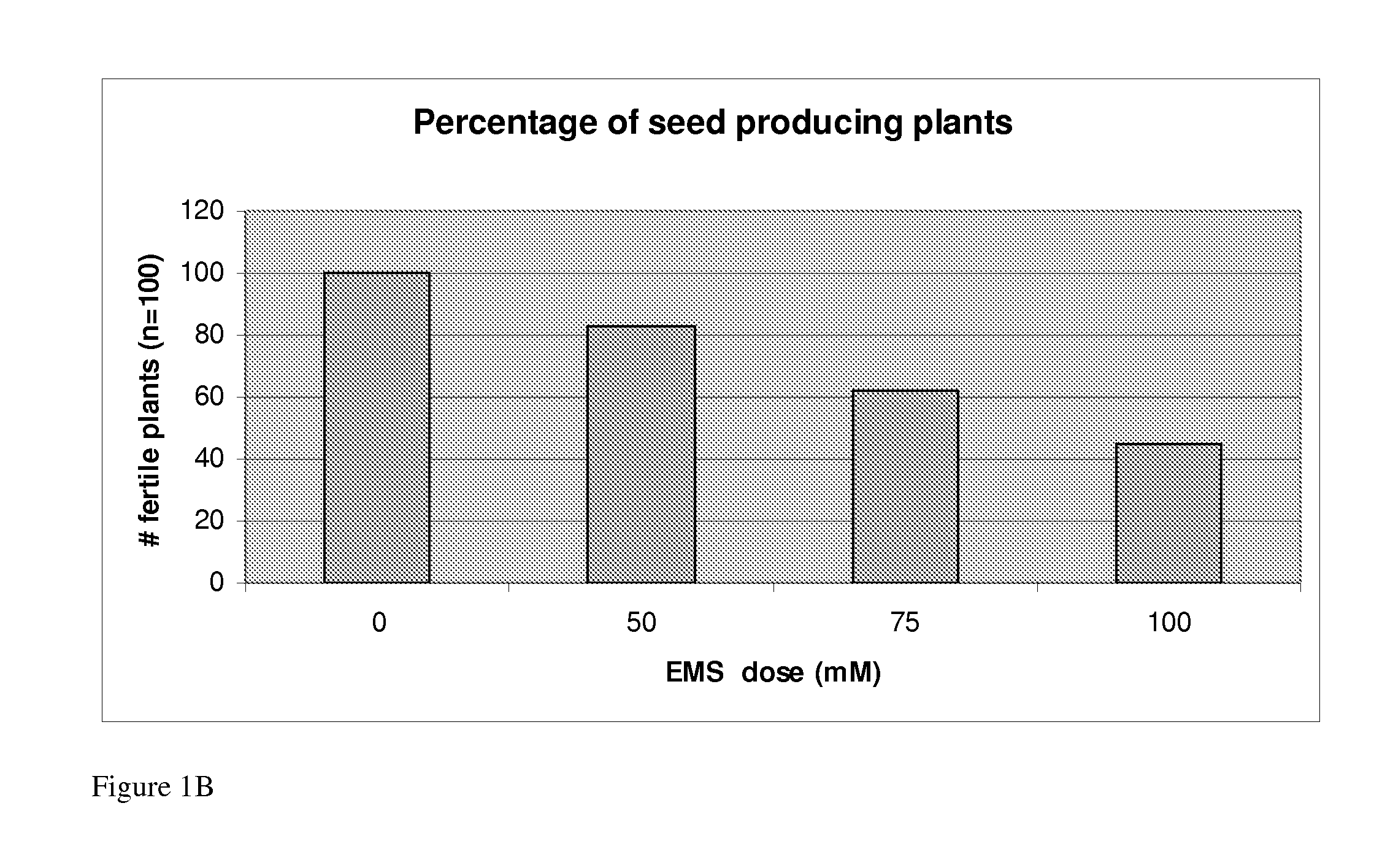Nicotiana Benthamiana Plants Deficient in Xylosyltransferase Activity
a technology of xylosyltransferase and plant, applied in the field of molecular farming, can solve the problems of low efficiency of homologous recombination in plants, limited use of plants as protein production platforms, lack of large mutant population required for mutant gene identification, etc., and achieve the effect of demonstrating the survival effect and recording the effect of plant fertility
- Summary
- Abstract
- Description
- Claims
- Application Information
AI Technical Summary
Benefits of technology
Problems solved by technology
Method used
Image
Examples
examples
[0087]1. Determination of the Optimal EMS Dosage for M2 Seed Production
[0088]The optimum dose for EMS mutagensis was determined by treating seeds of N. benthamiana with 0, 50, 75, 100, 150, and 200 mM EMS. Briefly, seeds were imbibed for 2 hours at room temperature, treated with EMS for 4 hours at room temperature and washed 5 times for 15 minutes at room temperature. Seeds were dried overnight and sown immediately. The effects on germination, seedling lethality and plant fertility were recorded. N. benthamiana has been described to be an amphidiploid species from a combination of N. debneyi and N. suaveolens (Goodspeed, T. H. (1954) The genus Nicotiana, Waltham, Mass.: Chronica Botanica). Surprisingly, we discovered that the parents, being diploids, proved to be more resistant to EMS as compared to N. benthamiana, being a tetraploid. Results for the N. benthamiana seeds are shown in FIGS. 1A and 1B. Although EMS treatment caused a delay in germination, no lethality was detected up ...
PUM
| Property | Measurement | Unit |
|---|---|---|
| pH | aaaaa | aaaaa |
| nucleic acid | aaaaa | aaaaa |
| covalent | aaaaa | aaaaa |
Abstract
Description
Claims
Application Information
 Login to View More
Login to View More - R&D
- Intellectual Property
- Life Sciences
- Materials
- Tech Scout
- Unparalleled Data Quality
- Higher Quality Content
- 60% Fewer Hallucinations
Browse by: Latest US Patents, China's latest patents, Technical Efficacy Thesaurus, Application Domain, Technology Topic, Popular Technical Reports.
© 2025 PatSnap. All rights reserved.Legal|Privacy policy|Modern Slavery Act Transparency Statement|Sitemap|About US| Contact US: help@patsnap.com



